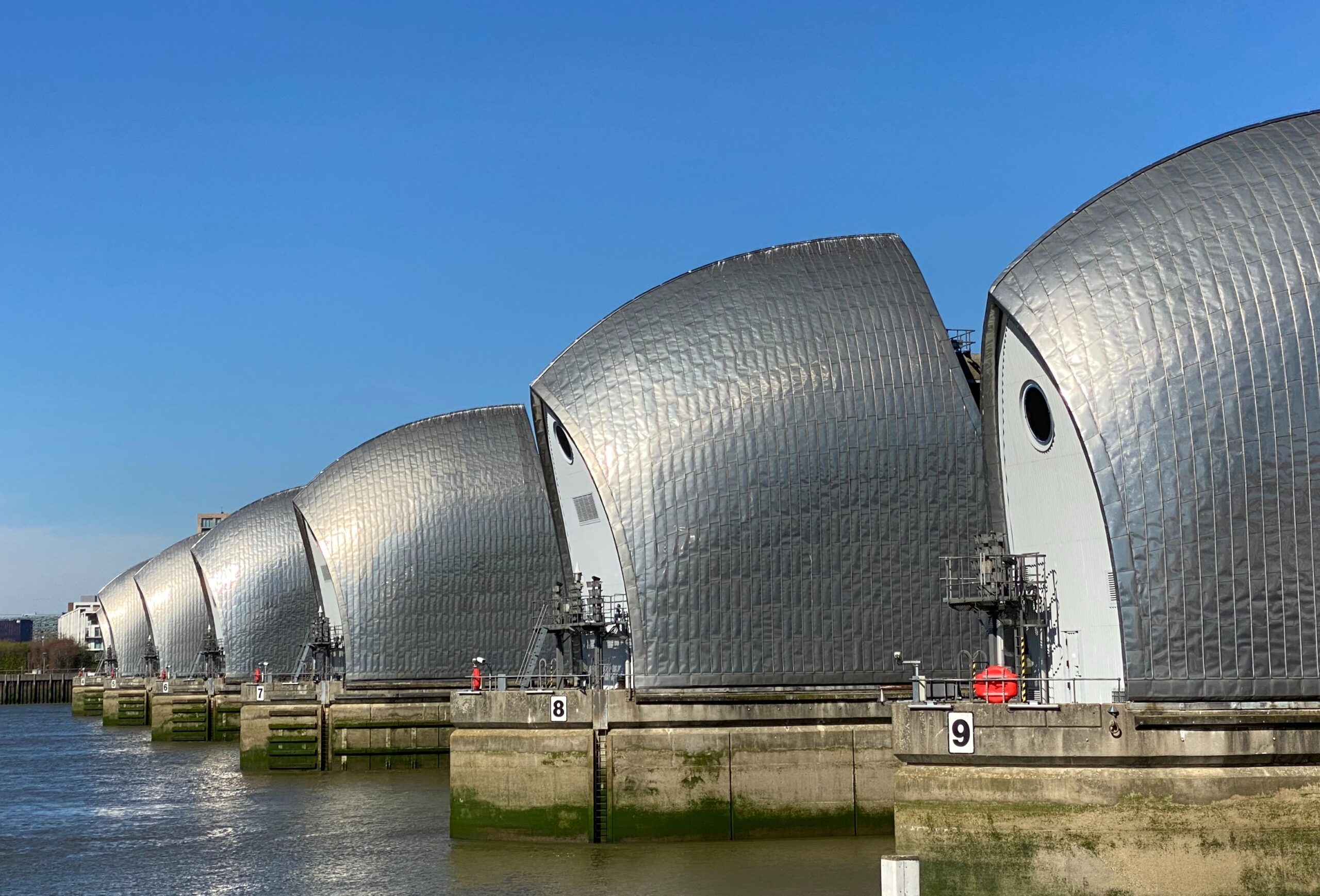Published in 2012, the Thames Estuary 2100 Plan is a long-term adaptive strategy setting out how flood risk management authorities can manage the increasing risk of tidal flooding. The plan aims to address the existing and future challenges posed by climate change, aging flood defences and population growth.
- Client Environment Agency
- Location Thames Estuary
- Services
An adaptive approach to managing the risk of flooding to people, property and the environment
Recognised as an international hub of cultural, commercial, and economic activity, the Thames Estuary is home to a complex network of 330km of flood defences, barriers and other structures designed to protect people, homes, businesses, transport networks and wildlife. As climate change accelerates, sea levels rise and the frequency of storm surges increases, these defences have to work harder to protect those at risk.
The Thames Estuary 2100 Plan aims to address this, with the proposed work set to take place over a 100-year period. Key to its success is ensuring the Plan is adaptive and is regularly reviewed and updated using the latest scientific evidence and data, something which we have been integral to. The first full 10-year review of the Plan is now nearing completion and has seen a core team of subject matter experts from within JBA working alongside an Environment Agency team to deliver detailed technical work to support the review.
Our primary work was to carry out an Economic Case Review (ECR) of the Plan. This involved a detailed reassessment of the costs of delivering the Plan over its remaining 90-year life and the economic benefits associated with the delivery of the work outlined. As a result of this major piece of work, we were able to issue an update to the Plan’s economic case to verify the Plan remained economically viable and that its preferred option was still valid.
As part of the ECR, we also needed to bring the appraisal up to date with the latest approaches, taking into account changes in government and Environment Agency guidance, as well as the increased emphasis on sustainability and carbon reduction. This meant conducting innovative studies on Carbon Optimisation and Natural Capital Assessment to determine how measures could be integrated into future updates. In addition, we brought new thinking to the appraisal by introducing option prioritisation using Net Present Social Value (NPSV) ahead of its wider adoption within the Environment Agency.

The Thames Estuary 2100 plan has identified over £15B of work to be carried out over a 100-year period, including the replacement of the Thames Barrier.
Assessing the Asset Management Investment
Closely linked to the ECR was a reassessment of the Asset Management Investment (AMI) need for the Thames Estuary. This allowed us to review the work carried out by the Environment Agency and its partners over the last 10 Years to collate findings from the initial phase of works. As a result, we could gather learning points on asset condition, works completed, new intervention timings, and costs. We also looked in detail at “lead times” for defence-raising works downstream of the Thames Barrier, so that these works can be more accurately programmed.
Bringing this information together with the cost information from the ECR we were then able to produce an update to the Plan’s 40-Year Programme for Flood Defence Asset Management. This update covers the period 2020 to 2050. It sets out an estuary-wide profile of proposed investment works, which will be used alongside a wider array of continually updated asset management tools to inform high-level financial planning, programming of works and staff requirements.

Benefit mapping
The third major aspect of our work on the Thames Estuary 2100 10-Year Review was conducting Benefit Mapping, which will allow the Environment Agency to ensure the Plan follows a benefit-led approach. This new approach within FCRM was the first time it had been applied to an Environment Agency project and saw our team produce four key pieces of work: a Strategic Benefits Map, a Benefit Dependency Map, two Benefit Profiles and a Quantification of the Adaptive Approach. Conducting this work allows the full value of the Plan to be highlighted alongside the flood risk management benefits, and will help in identifying partners, stakeholders and communities who are set to benefit from delivering the Thames Estuary 2100 Plan.






